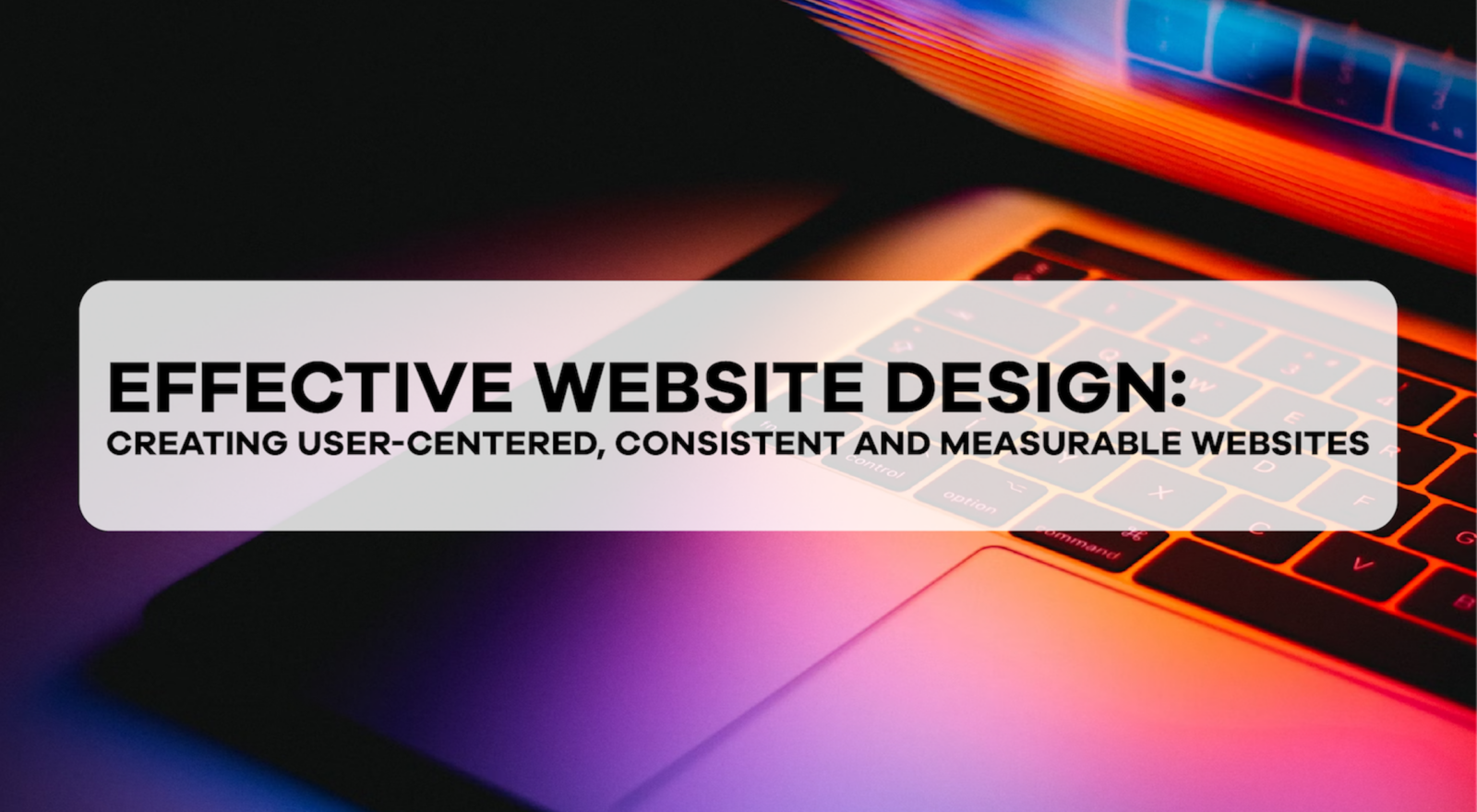In our fast-paced digital world, web design plays a pivotal role in determining the success of a marketing initiative, and by extension the success of a brand. An effective web design is not just about aesthetics; it’s about understanding your audience, crafting a seamless user experience and continuously measuring the results of your design. In this article we’ll explore the key principles and strategies for effective web design, with a focus on user-centered design, atomic design and measuring effectiveness.
User-Centered Design
Understanding Your Audience: A user-centered approach is the cornerstone of successful web design. To create a website that resonates with your target audience, you need to understand their needs, preferences and behaviors. This is achieved by conducting user research to validate user personas and gather feedback to tailor the experience to meet their expectations.
Content and visual design work together to create the experience. Find a balance between text and visual elements to engage users effectively. The content should be concise, relevant and structured, while the visuals should complement the message and enhance the user experience further.
Establish a clear visual hierarchy on your website. Use typography, color and spacing to guide users through the content. Important information should be prominently displayed, while less critical elements can be de-emphasized. Atomic design, discussed below, is used to communicate a consistent hierarchy.
Intuitive and straightforward navigation menus and search functionality define the roadmap for users on your website. They should be able to easily find what they’re looking for without getting lost.
The site should work across a wide variety of devices, a feature commonly referred to as responsive design, and be just as intuitive on a phone as it is on a tablet or desktop.
Effective CTAs (Calls to Action) are vital for conversions. They should be eye-catching and action-oriented. Whether it’s a sign-up button or a “Learn More” prompt, CTAs guide users toward their next steps.
Atomic Design
Atomic design is an approach that focuses on creating consistent, reusable elements, providing a clear methodology for crafting a user interface that is scalable and can be deployed throughout the website. The basis for atomic design starts with the smallest of website elements, or “atoms,” and extends to molecules, organisms, templates and pages. An example of atomic design is Google’s Material.io design system that is followed for all of their web applications and services.
The primary benefit of developing an atomic design system is to ensure brand identity and communication are consistent across all web properties and digital marketing initiatives, with a single source of truth for all.
Every component, be it a button, form field, header or footer is designed as a stand-alone element that can be reused consistently across the website. This streamlines the design process and ensures a cohesive look and feel.
This consistency is key to not only the success of a website but also to setting expectations that allow content administrators and users alike to understand the intent behind each design element, fostering trust and reliability.
Measuring Effectiveness
An effective web design is not a one-time achievement but an ongoing process. To ensure that your design continues to meet its objectives, you need to measure its effectiveness.
Search engine ranking is crucial to a site’s discoverability and effectiveness. High-quality, well-structured content, along with a user-friendly design can positively impact your search engine optimization (SEO), helping you rank higher in search results.
Web analytics tools gather data about user behavior, with the most well-known service being Google Analytics. Metrics such as page views, bounce rates and conversion rates can offer valuable insights into the effectiveness of your design. Regular review of these metrics is used to identify areas for improvement.
The following are common metrics that are measured using analytics tools.
- Overall traffic/site visits
- Page views
- Conversion rate
- Average engagement time
- Page load time
Every unique site will have different metrics that would be considered “good,” for example, e-commerce sites are most concerned with conversion rates of its users, especially as items are added to shopping carts. By contrast, a site that is more information-based would be more concerned about time spent on specific pages.
MMGY’s LaunchPoint
Having read this far, it’s clear that there are many factors to take into consideration when designing a website. In order to streamline this process, MMGY has developed LaunchPoint, a design/development framework that has best practices built in. By allowing designers and developers to focus on the aspects that make your brand or project unique, we can efficiently publish elegant, on-brand sites that are responsive and follow web standards.
Effective web design goes beyond aesthetics; it’s about creating a user-centered, consistent and measurable experience. In the digital landscape, this is one of the most powerful tools you can use to engage users and achieve your busines goals. By understanding your audience, following atomic design principles and continuously measuring the effectiveness of your design, you can create a website that not only looks great but also delivers results.

